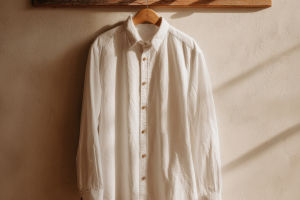We often come across old pocket watches and feel an instant connection to a different era. These watches are not just old timepieces but symbols of history, craftsmanship, and personal stories.
Unlike today’s digital devices or wristwatches, old pocket watches were carefully made by hand and carried close to the body, often passed down through generations. They remind us to slow down, appreciate details, and value the art of making time visible.
The Classic Design and Functionality
Old pocket watches usually feature a round dial with hour and minute hands, sometimes including a second hand or even more complex functions. Many of them come with a protective cover called a hunter case, which flips open to reveal the time. This cover helped protect the delicate glass face from scratches and dirt.
The chain attached to the watch served a practical purpose—it kept the watch secure in a pocket and prevented it from falling. Chains could be simple or intricately designed, often made of silver, gold, or brass. Sometimes the watch was fixed to a vest, belt loop, or even a collar, depending on personal style and the era.
The decoration on old pocket watches is truly impressive. From engraved floral patterns, monograms, to family crests, these details made each watch a unique item full of personality. Some even featured miniature paintings or precious stones embedded in the case, showing that a pocket watch was as much a piece of jewelry as it was a timekeeping device.
Daily Life Before Wristwatches
Before wristwatches became common in the early 20th century, pocket watches were the standard for anyone who needed to keep track of time accurately. Whether working professionals, train conductors, or everyday people, pocket watches helped us organize schedules, arrive on time, and coordinate events.
Imagine a busy city street a hundred years ago, with people pulling out their pocket watches to check the time. The ticking sound and the action of opening the cover created a ritual, a moment to pause and be aware of the present. This was a very different experience from quickly glancing at a wristwatch or a phone screen today.
The pocket watch was also a symbol of status and reliability. Owning one meant you cared about punctuality and held some level of social responsibility. Many people took pride in maintaining their watches well, winding them daily and keeping them clean.
The Art of Craftsmanship
One of the most fascinating things about old pocket watches is how they were made. Before modern electronics, these watches relied on tiny mechanical parts—springs, gears, and levers—that had to work perfectly together.
Watchmakers spent years training to master this craft. Each watch was carefully assembled and tested to ensure accuracy. The winding mechanism powered the watch, meaning the owner had to wind it regularly to keep it running. This made the relationship between the owner and the watch more personal.
Inside many old pocket watches, you can still find beautifully decorated movements—tiny parts engraved or polished by hand. This level of detail is rare in today’s mass-produced timepieces and shows how much pride went into making these watches.
Why Old Pocket Watches Still Matter to Us
Despite all the technology available today, old pocket watches continue to capture our interest. Collectors hunt for rare models, while others enjoy wearing them as vintage accessories.
Old pocket watches connect us to a time when things were made slowly and carefully. They remind us that time isn’t just numbers on a screen but something to appreciate and respect. For many, owning an old pocket watch is about honoring tradition and craftsmanship.
Moreover, pocket watches often hold emotional value. Many were gifts on important occasions—birthdays, weddings, retirements—and were treasured family heirlooms. When we hold or wear one, we’re connecting with stories from the past and keeping memories alive.
How to Care for an Old Pocket Watch
If we’re lucky enough to have an old pocket watch, it’s important to take good care of it. Regular winding is necessary to keep the mechanism working. However, overwinding can cause damage, so it’s best to wind gently until you feel resistance.
Cleaning the case with a soft cloth will keep the exterior looking good, but internal repairs or servicing should be left to professional watchmakers who understand these antique mechanisms.
Storing the watch safely when not in use is important too. Keeping it in a dry, stable temperature environment helps avoid rust or damage. Using a soft pouch or dedicated box is a good idea.
Sharing Our Love for Old Pocket Watches
Old pocket watches are much more than just tools for telling time—they are art, history, and emotion all wrapped into one small object. They remind us of a slower pace of life, of attention to detail, and the value of tradition.
Have you ever owned or seen an old pocket watch that made you stop and wonder? We’d love to hear your stories and thoughts about these timeless treasures. Let’s appreciate the beauty and meaning behind old pocket watches together!


